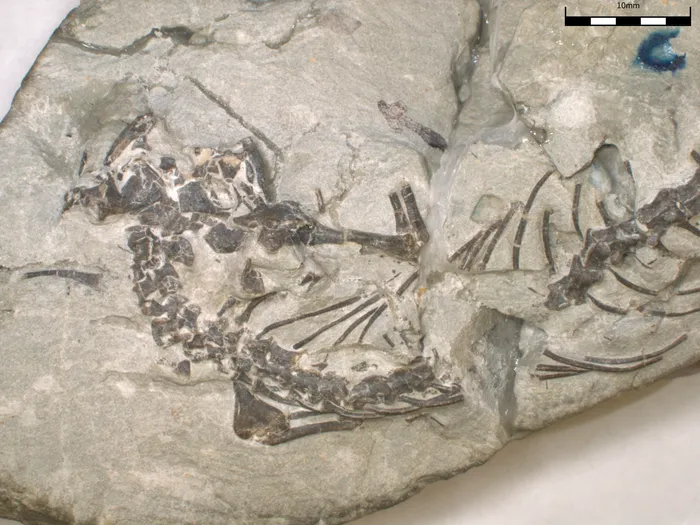The well-preserved fossil of a new extinct species of lizard-like reptile has been discovered, shedding light on the tuatara – the last living member of a once-diverse group of reptiles.
The fossil was discovered from a site in Wyoming’s Morrison Formation and is a new species that has been named Opisthiamimus gregori. This new species inhabited Jurassic North America around 150 million years ago, living amongst dinosaurs.
The reptile would have been about 6 inches from nose to tail, and would have fitted in the palm of a human hand, likely surviving off a diet of insects and other small invertebrates.
This discovery was made by a team of scientists from the National Museum of Natural History, the University College London and the Natural History Museum. They described this new animal in a paper published in the Journal of Systematic Palaeontology.
“What’s important about the tuatara is that it represents this enormous evolutionary story that we are lucky enough to catch in what is likely its closing act,” said Matthew Carrano, one of the authors of the study, and the curator of dinosaurs at the National Museum of Natural History.
“Even though it looks like a relatively simple lizard, it embodies an entire evolutionary epic going back more than 200 million years.”

Further study of the specimens and fossils found in Wyoming could help reveal why this animal’s order of reptiles dwindled. The order once contained a diverse array of species, but New Zealand’s tuataras are the only surviving members.
In appearance, the tuatara resembles a stout iguana. However, the tuatara and its newly discovered relative aren’t actually lizards. Instead, they are rhynchocephalians. These are an order that diverged from lizards roughly 230 million years ago.
Rhynchocephalians were found across the world and came in a range of different shapes and sizes. However, for unknown reasons, they all but disappeared as lizards and snakes became more common.
The fossil has now been added to a museum collection where it will remain for additional study. Researchers hope to be able to one day understand why the tuatara is the last remaining rhynchocephalian.
“These animals may have disappeared partly because of competition from lizards but perhaps also due to global shifts in climate and changing habitats,” Carrano said.
“It’s fascinating when you have the dominance of one group giving way to another group over evolutionary time, and we still need more evidence to explain exactly what happened, but fossils like this one are how we will put it together.”
The fossil is almost entirely complete and in great condition. However, it is missing the tail and part of the hind legs. Full fossils can be rare with animals that are so small.
After the team had freed as much of the fossil from the rock as possible without damaging it, they scanned the rock with high-resolution computerised tomography. This is a method that uses multiple X-ray images from different angles to make a 3D representation of the fossil.
With the fossil bones 3D digitally rendered, the bones were digitally reassembled. Using software to eventually create a nearly complete 3D reconstruction, even recreating bones that were crushed or damaged, the team managed to make a clear version of the skull.
“Such a complete specimen has huge potential for making comparisons with fossils collected in the future and for identifying or reclassifying specimens already sitting in a museum drawer somewhere,” said David DeMar, a research associate at the National Museum of Natural History. “With the 3D models we have, at some point we could also do studies that use software to look at this critter’s jaw mechanics.”
Read more:
